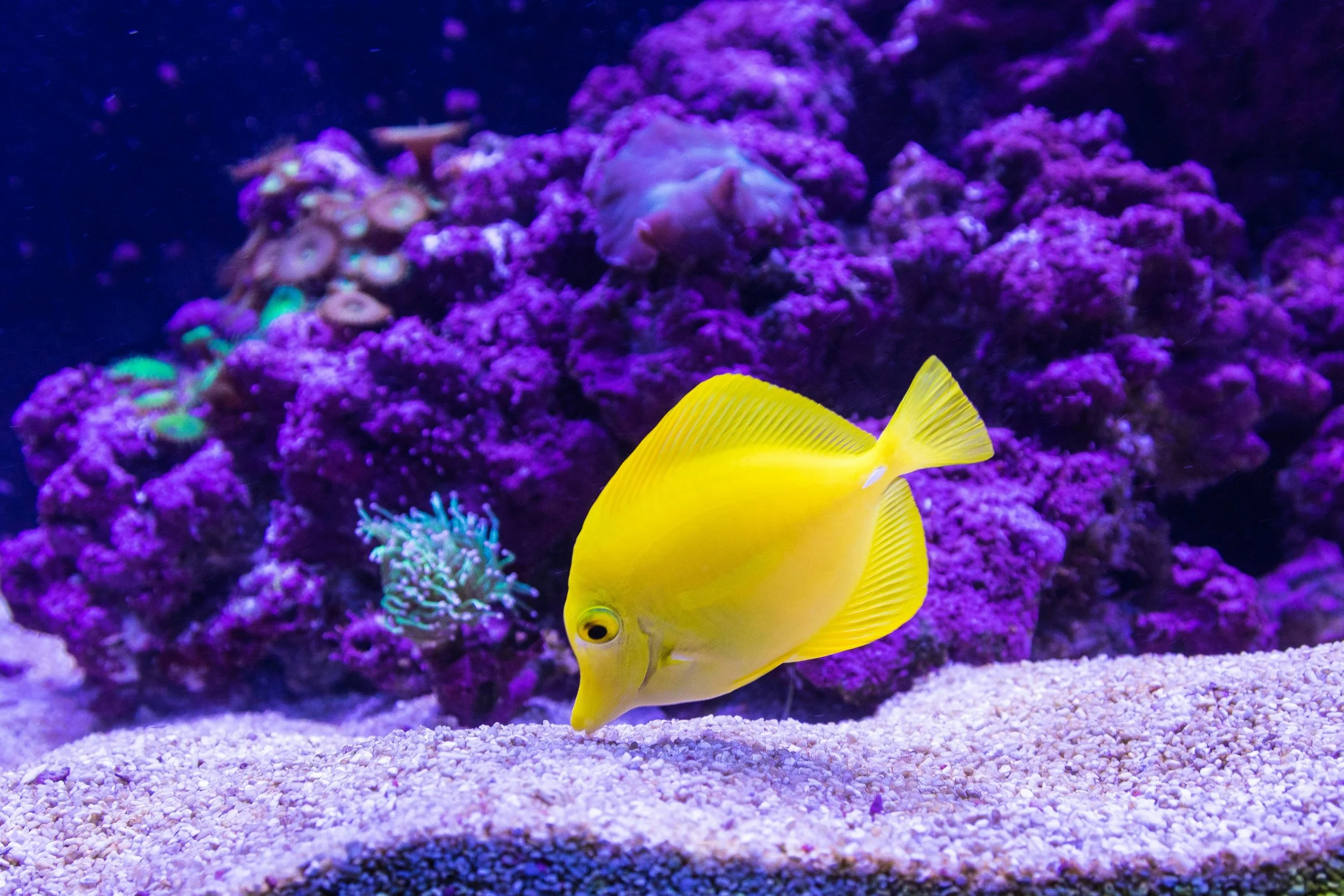Understanding the Key Differences Between Saltwater and Freshwater Aquariums
The choice between a saltwater or freshwater system is one of the most important decisions in any large-scale aquarium project. It affects everything from design and life support systems to the types of fish, corals, plants, and overall operational complexity.
At RedFin, we guide clients through this decision based on their goals, location, budget, and long-term operational capabilities. This article compares the two systems to help you make a more informed decision for your next feature aquarium.
1. Aesthetic Impact: Marine Colour vs. Freshwater Elegance
Saltwater aquariums offer a vibrant, tropical look with species like angelfish, tangs, butterflyfish, and living corals. They deliver:
Bold, eye-catching colors
Dynamic reef structures
High visual value for hospitality and public spaces
Freshwater aquariums, especially planted ones, create a calm, naturalistic look inspired by rivers and lakes. They’re ideal for:
Earth-toned, organic aesthetics
Heavily planted aquascapes
Minimalist or architectural interiors
2. Biological and Stocking Considerations
Saltwater Displays:
Livestock is often more delicate and expensive
Species require precise water chemistry (salinity, calcium, trace elements)
Corals and invertebrates need strong lighting and flow
Longer quarantine and acclimation procedures
Freshwater Displays:
Species are typically hardier and more forgiving
Compatible with automated top-up and filtration
Easier to maintain live plants and biotope-specific setups
Better options for rare South American or Asian fish species
3. Equipment and Life Support System Requirements
Saltwater aquariums demand significantly more complex life support systems compared to freshwater setups. These systems typically include high-performance protein skimmers, UV sterilizers, ozone units, and large-scale mechanical and biological filtration. Strong water movement is also essential, achieved through wave-makers and return pumps that replicate natural ocean currents. Lighting must be intense and carefully selected, especially for reef tanks where corals rely on high PAR (Photosynthetically Active Radiation) output. Automation plays a critical role in saltwater systems to manage dosing, salinity levels, temperature stability, and redundancy safeguards, minimizing the risk of equipment failure and ensuring livestock health.
Freshwater aquariums, on the other hand, operate with moderate system requirements. Biological filtration remains a core component, and UV sterilizers are often used for water clarity and pathogen control. Flow can be kept low to moderate, depending on the species or aquascape being created. Standard LED lighting is typically sufficient, with the option to use plant-specific lighting in planted aquariums to support photosynthesis and growth. While automation is beneficial, it’s often optional for simpler setups.
4. Budget and Long-Term Operating Costs
Initial Cost:
Saltwater: Higher setup cost due to equipment, livestock, and materials
Freshwater: Lower cost, especially if live plants replace corals
Running Cost:
Saltwater: Higher due to salt mix, lighting, additives, and water changes
Freshwater: Lower, especially in planted tanks with stable bioload
Example: A 10,000-liter reef tank may cost 2–3x more to operate annually than a similarly sized freshwater planted tank.
5. Maintenance and Staffing Requirements
Saltwater aquariums often require specialized aquarists to manage delicate ecosystems and coral health.
Freshwater tanks can be maintained with a broader range of staff, especially in simpler or hardscape-only designs.
RedFin provides maintenance training and full operational handovers for both systems, with scalable support models depending on complexity.
6. Location, Climate, and Water Supply Considerations
The local environment can influence the ideal system:
Coastal areas with access to seawater may lower saltwater operating costs
Hard tap water may limit freshwater species or plants unless treated
Hot/humid climates can cause faster evaporation in open-top saltwater tanks, requiring more top-up automation
7. Hybrid Systems: The Best of Both Worlds
Some large-scale displays combine the strengths of both systems:
Saltwater feature tanks at entrances or lobbies
Freshwater riverscapes or lake biotopes along pathways or corridors
Brackish exhibits that host species from mangroves and estuaries
In public aquariums, hybrid models allow more variety in species and storytelling across a single venue.
Choosing between saltwater and freshwater for a large-scale aquarium isn’t just about aesthetics, it’s a decision that affects logistics, budget, and long-term operation. At RedFin, we tailor every project to the client's vision and provide the guidance, engineering, and support to bring it to life, whether you're drawn to the richness of a living reef or the elegance of a planted riverscape.






